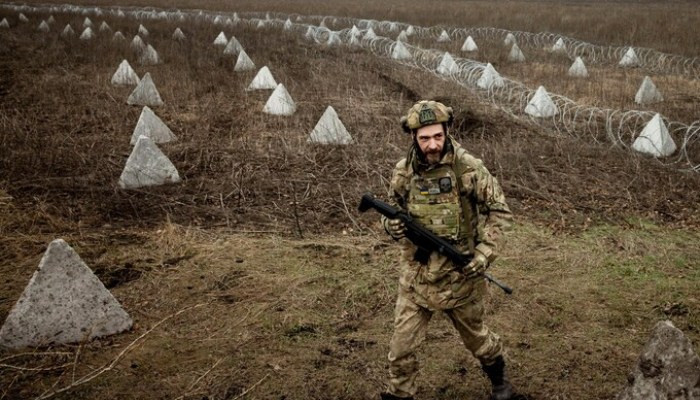Ukraine digs its own Surovikin line against impending Russian offensive
 Row upon row of freshly-dug trenches, concrete dragon’s teeth and underground command centres adorn vast expanses of Ukraine’s countryside. The new fortifications have sprung up along key segments of its more than 621 miles of front as Kyiv’s spluttering counter-offensive turned into what military analysts have described as an “active defence”. In a signal of a change of posture, president Volodymyr Zelensky late last year announced Ukraine was “significantly enhancing” its fortifications. No chances were to be taken, with the construction of fortifications also ordered along the country’s borders with Russia and Belarus, all the way to its frontier with its Western ally Poland. The new defences closely resemble the so-called “Surovikin line” – the three-layered system of trenches, tank traps and strong-points Russia successfully used to thwart Ukraine’s counter-offensive. Minefields that plagued Ukraine’s Nato-trained brigades of Western tanks and armoured vehicles have been replicated by Kyiv. But the Ukrainians face a quandary. Their defences simply cannot be as rigid along the front lines as the Russian fortifications that stretched from the southern Zaporizhzhia to eastern Donetsk, the main focus of Ukraine’s offensive. While stronger fortifications would slow down Russian troops, reduce the number of Ukrainian troops needed to defend and mean fewer casualties, it would also diminish Kyiv’s ambition to retake its occupied territory. Political quandary This is where the concept of “active defence” comes in for Ukrainian forces: holding the defensive lines while maintaining offensive action in the hope of finding weak spots that could lead to a collapse in the Russian lines. It was a similar tactic that resulted in the surprise counter-offensive in September 2022 that saw Kyiv liberate swathes of territory in the Kharkiv region from Russian control. “One of the principles of defence is offensive actions,” Mr Arnold added. Therefore, the fortifications will become heavier the further you move into Ukrainian-held territory, with the front lines allowed to remain flexible. Forward defence has been a hallmark of Ukraine’s resistance, refusing to sit back and allow their forces to rest on their laurels. The aim for 2024 for Ukraine appears to be to replenish their battle-stricken forces and regenerate offensive combat power ahead of next year. Maintaining a flexible line of defence will enable Ukraine troops to train but also ensure a readiness should an offensive opportunity arise, according to Mr Arnold. “Static defences are rarely a good idea for militaries, because it sort of fixes your own ability to manoeuvre,” he added. The skills and fitness of soldiers can easily degrade if they are sat in trenches for too long, especially during Ukraine’s bitter cold winter months. Deeper into Ukrainian-held territory, fallback positions emerge, consisting of trench networks and new dug-in command centres. Where the Ukrainians have taken up more static defensive positions, they have placed a series of fortifications less than a mile apart. “Each fort can defend itself from every direction,” Clement Molin, co-founder of the French Atum Mundi think tank, said. “You have to take all of them to advance.” |

Trump vows retaliation after three Americans killed in Syria attack
10119:47
UNESCO recognizes Italian cuisine as intangible world heritage
17416:42
The Walt Disney Company and OpenAI reach landmark agreement to bring beloved characters from across Disney’s brands to Sora
59811.12.2025, 21:48
Miss Finland stripped of crown following apparent racist gesture (photo)
68111.12.2025, 17:35
Trump launches gold card program for expedited visas with a $1 million price tag (photo)
57811.12.2025, 13:11
«Demand from your city authorities the AIR your children are entitled to-it is a vital necessity»: Kristina Vardanyan (photo)
69310.12.2025, 18:47
